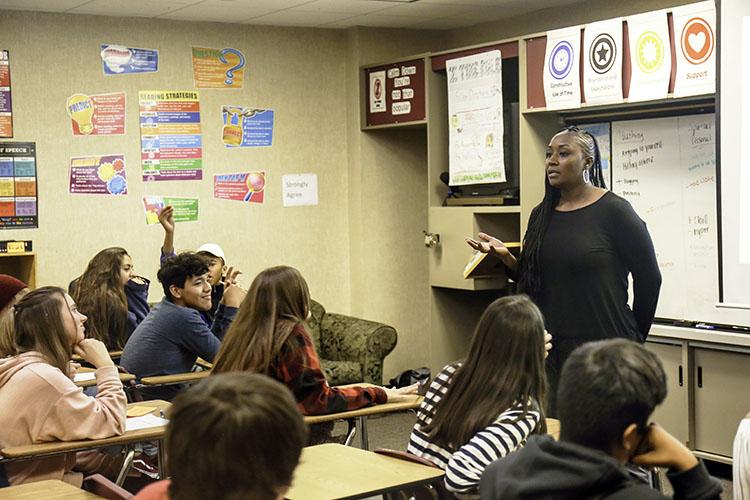Building Assets and Reducing Risks (BARR) I3 Scale-Up Evaluation

Building Assets, Reducing Risks (BARR) is a comprehensive, strength-based approach to education that aims to boost achievement for all students by improving a school’s effectiveness at building relationships, leveraging real-time student data, and capitalizing on the strengths of each student. Since 2013, AIR has led two consecutive evaluations of the BARR approach and its impact on student outcomes and teacher experience through validation and scale-up grants from the U.S. Department of Education’s Investing in Innovation (i3) program.
The scale-up evaluation measured BARR’s impact on students and teachers in ninth grade, often a difficult transition year into high school. The evaluation included 66 schools distributed across three cohorts (2017–18, 2018–19, and 2019–20 school years) and included 21,529 students and 524 teachers. Schools were recruited from 12 states and the District of Columbia, with a focus on relatively low-performing schools. Using a randomized controlled trial to measure BARR’s impacts, schools in each cohort were randomly selected to receive the BARR approach immediately (the treatment group) or receive BARR after one year (the control group). Building on findings from the 2019 study, the scale-up evaluation expanded its focus on teacher-related outcomes. The evaluation also addressed implementation challenges caused by the COVID-19 pandemic.
Notable Scale-up Evaluation Findings
- The BARR approach improved teachers’ collaboration with their peers, their data use, and a range of other teacher outcomes. Among teacher outcomes, the most substantial effects were on teacher collaboration with and view of colleagues, teacher use of data, and view of school supports. Positive effects on teacher-reported outcomes persisted even after schools operated virtually for much of the 2019–20 school year due to the pandemic.
- The BARR approach had substantial and statistically significant impacts on the proportion of students who passed all their core courses. For example, 80 percent of ninth graders in the treatment group passed all their core courses, compared to 74 percent of students enrolled in control group schools that operated “business as usual.” These effects were strongest for male students, students of color, students eligible for free or reduced-price lunch, English learners, and students with disabilities.
- BARR significantly reduced chronic absenteeism. The rate of chronic absenteeism among ninth graders in the treatment group was 19 percent, compared to 22 percent in “business as usual” schools. Positive effects on chronic absenteeism were strongest for male students and students of color.
- There is some evidence that BARR had a positive impact on Preliminary Scholastic Aptitude Test (PSAT) scores. However, the PSAT test could not be administered in 2020 due to the pandemic so these results were available only for the first two cohorts.
The scale-up evaluation findings are consistent with evidence from previous studies which concluded that BARR is an effective model for schools that want to reduce course failure and chronic absenteeism. The collective body of evidence on the BARR model also showed that students and teachers using the BARR approach reported better school experiences, including stronger relationships among teachers, among students, and between teachers and students.



